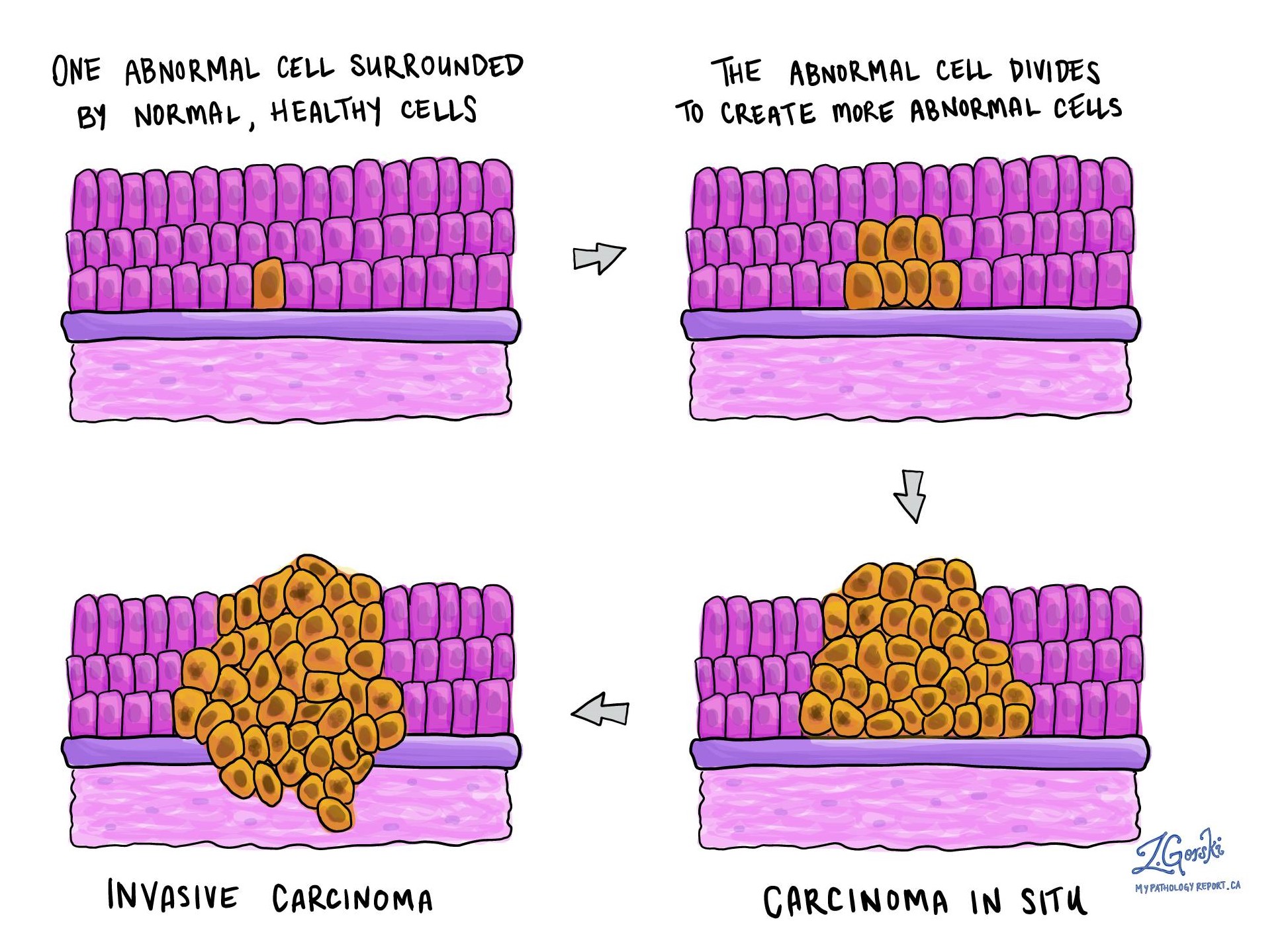The Pathology Dictionary Team
May 29, 2023
What does non-invasive mean in a pathology report?
In pathology, non-invasive is used to describe a disease (typically a tumour) that remains localized and has not spread into the surrounding tissues or organs. All types of benign (noncancerous) tumours are by definition non-invasive. However, some types of early-stage malignant (cancerous) tumours are also considered non-invasive if the tumour cells have not spread into surrounding tissues. For example, non-invasive carcinoma in situ refers to a cancerous growth that is confined to the epithelium, a thin layer of tissue on the surface of most organs.

Can non-invasive tumours spread to other parts of the body?
No. By definition, all non-invasive tumours are localized and not able to spread to other parts of the body.
Can a malignant tumour be non-invasive?
Yes. Some types of tumours are made up of malignant (cancerous) cells but the cells have not yet spread into the surrounding tissues. Over time, a non-invasive type of cancer can turn into an invasive type of cancer.
What are some examples of non-invasive cancers?
Examples of non-invasive cancers include:
- Ductal carcinoma in situ (DCIS): DCIS is a non-invasive type of breast cancer where tumour cells are found only inside the ducts in the breast. By definition, it has not spread beyond the ducts into the surrounding breast tissue.
- Lobular carcinoma in situ (LCIS): LCIS is a non-invasive condition that begins in the milk-producing glands (lobules) of the breast. The tumour cells do not penetrate the surrounding tissue or spread to other areas of the body like invasive breast cancer.
- Adenocarcinoma in situ of the cervix: Adenocarcinoma in situ is a non-invasive form of cervical cancer where tumour cells are present only on the surface of the cervix and have not spread into other tissues.
- Urothelial carcinoma in situ of the bladder: Urothelial carcinoma in situ is a non-invasive early stage of bladder cancer where tumour cells are found only on the inner lining of the bladder without invading the muscle layer or spreading.
- Adenocarcinoma in situ of the lung: Adenocarcinoma in situ is an early non-invasive type of lung cancer where the tumour cells are still confirmed to the inside of the small air spaces in the lungs called alveoli.
- Melanoma in situ: Melanoma in situ is an early stage of skin cancer where abnormal melanocytes are present in the outermost layer of the skin (epidermis) but have not spread into the deeper layers of the skin (dermis and subcutaneous adipose tissue).
- Non-invasive papillary urothelial carcinoma: This is a non-invasive form of bladder cancer where tumour cells connect together to form long finger-like structures called papillae that are confined to the inner lining of the bladder and have not spread into surrounding tissues. Non-invasive papillary urothelial carcinoma is further divided into two grades – low grade papillary urothelial carcinoma and high grade papillary urothelial carcinoma with the high grade type being more likely to invade over time.
- Squamous cell carcinoma in situ of the skin: Squamous cell carcinoma in situ (also known as Bowen disease) is a non-invasive type of skin cancer where the tumour cells are found only in the outermost layer of the skin (epidermis) and have not spread into the deeper layers of the skin (dermis and subcutaneous adipose tissue).


